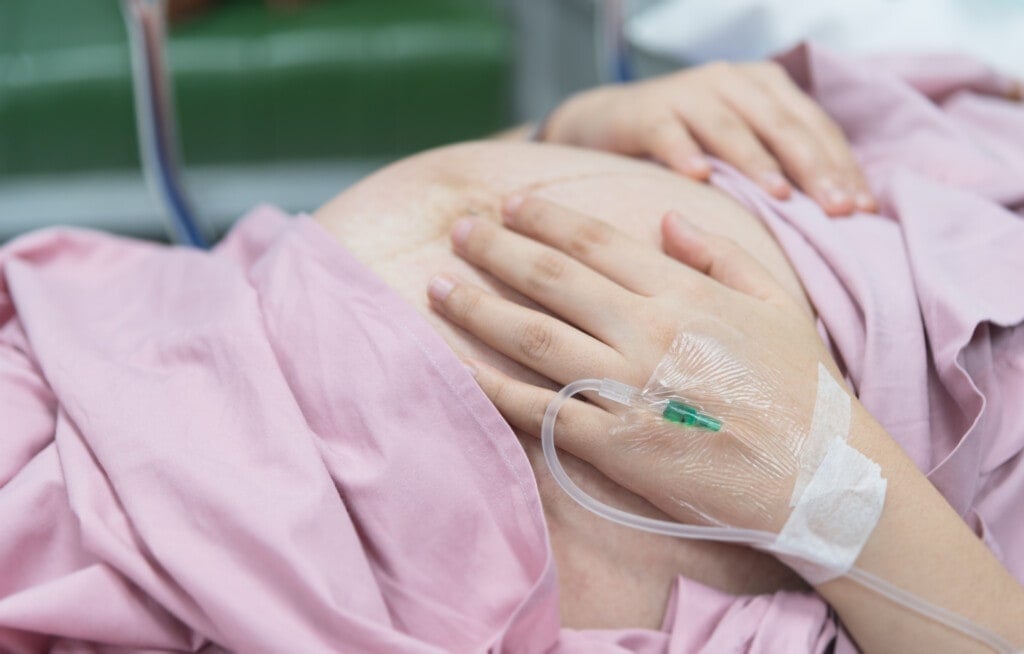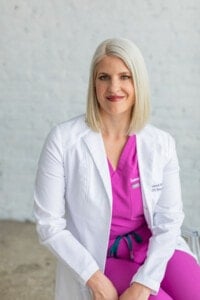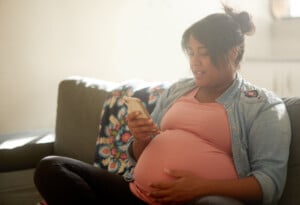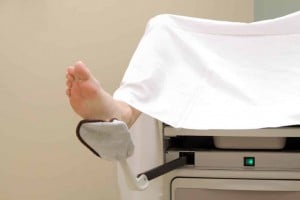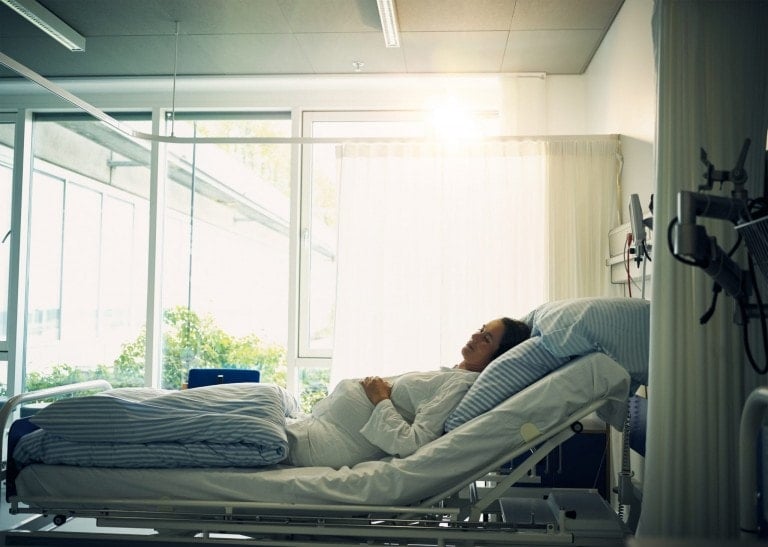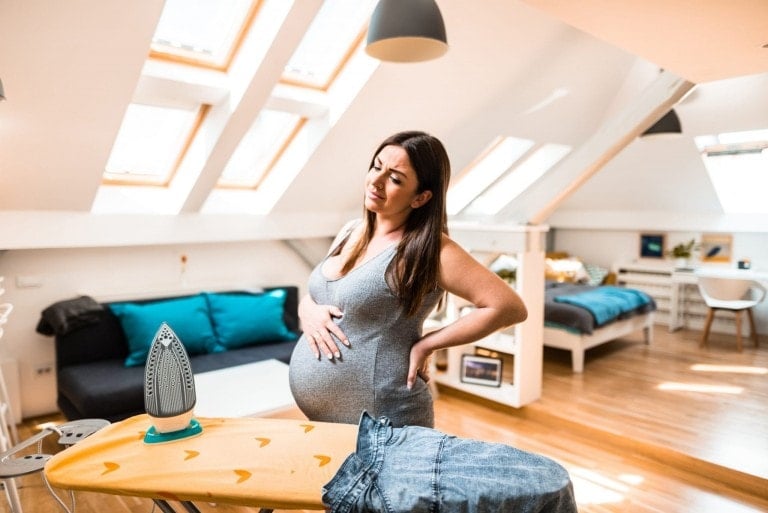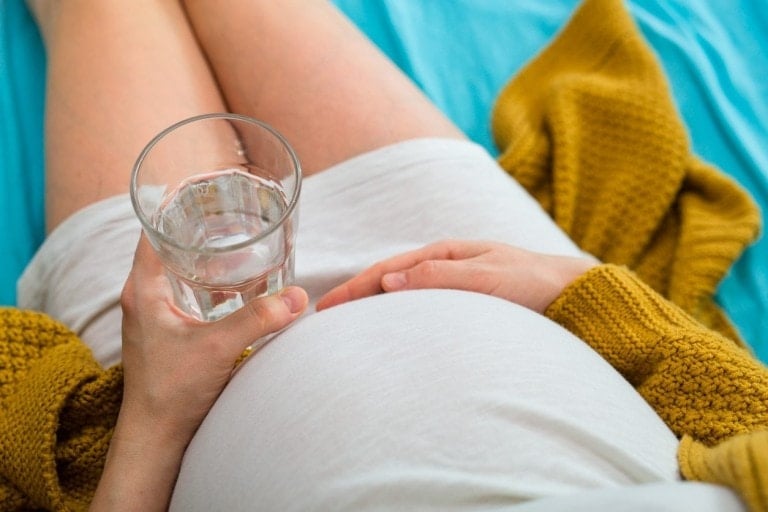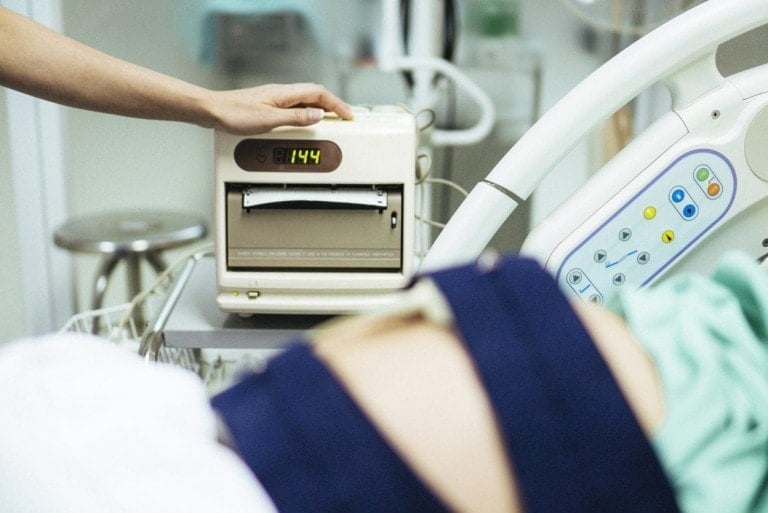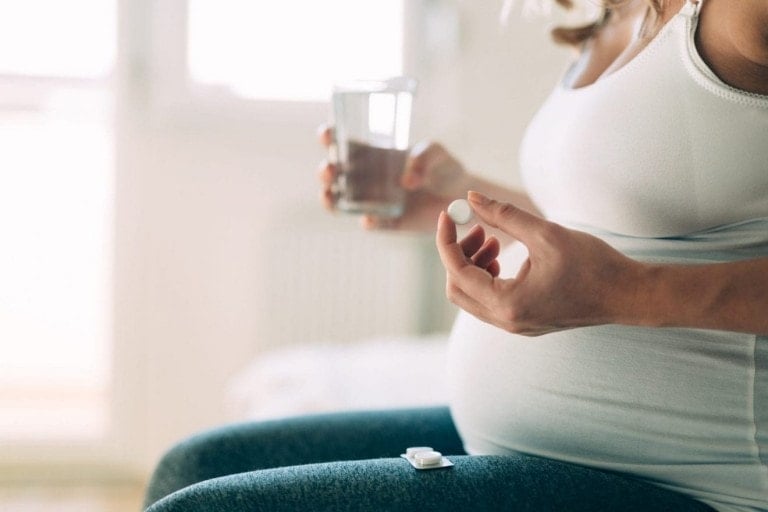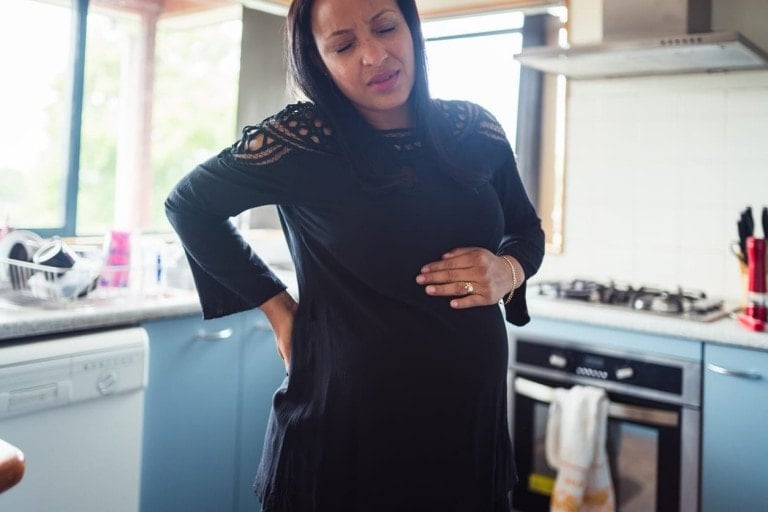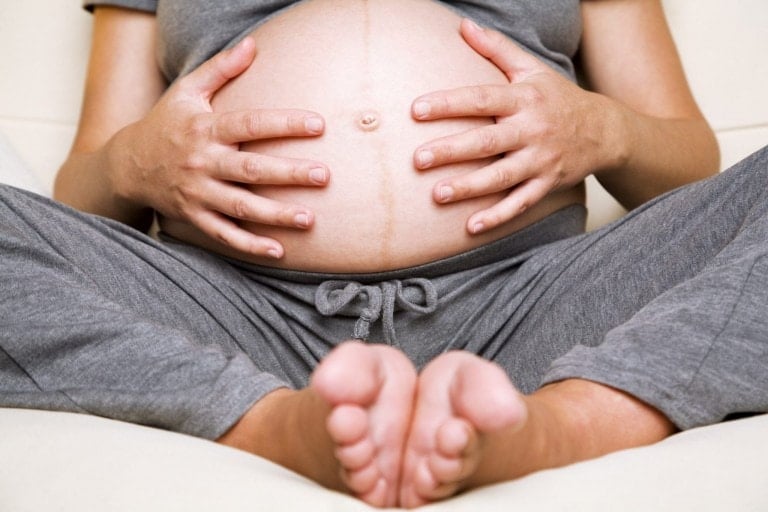Below is a photo of the first time that I held my twins, Arthur and Heidi. It was 33 hours after they were born. I waited two days after this picture was taken to see them again. Within minutes after I delivered the twins via emergency C-section, I was fighting for my life in intensive care. While I didn’t know then what was wrong, I came to find out I was suffering from a little-known condition called HELLP syndrome.

What Is HELLP Syndrome?
HELLP syndrome is a rare but life-threatening complication of pregnancy.1 It is most common in women with eclampsia or preeclampsia. HELLP typically occurs in the last three months of pregnancy (the third trimester) but can also start soon after delivery. HELLP syndrome gets its name from the three features of the condition:4
- “H” is for hemolysis – This is where the red blood cells in the blood break down.
- “EL” is for elevated liver enzymes (proteins) – A high number of enzymes in the liver is a sign of liver damage.
- “LP” is for low platelet count – Platelets are substances in the blood that help it clot.
The cause of HELLP syndrome is unknown. If it is not diagnosed and treated quickly, HELLP can cause severe complications for the mother and the baby. Treatment for HELLP is to deliver the baby as soon as possible.2
What Are the Signs of HELLP?
The symptoms of HELLP syndrome can be vague because they can also occur in a normal, healthy pregnancy. Typical signs of HELLP include:1,4
- Headache
- Nausea
- Vomiting
- Indigestion with pain after eating
- Abdominal or chest tenderness and upper right side pain
- High blood pressure
- Protein in urine
- Swelling
- Changes in vision
- Shoulder pain
- Bleeding
Who Is at Risk for HELLP?
According to the American Pregnancy Association, HELLP syndrome affects around 0.2-0.6% percent of all pregnancies.2 As mentioned, if you have preeclampsia, you’re at risk for developing this syndrome. The American Pregnancy Association says that 4-12% of women diagnosed with preeclampsia develop HELLP.2
One study found that approximately 70% of HELLP cases develop before delivery, most of them between weeks 27 and 37 of gestation. The rest of the cases happen within 48 hours after delivery.3
How HELLP Syndrome Affected Me
Here’s how I found out that I had HELLP syndrome and how it affected me and my pregnancy experience:
My Pregnancy Was Normal . . . For a While
I had an amazing pregnancy. I never suffered from anything apart from slight heartburn. But, at 33 weeks, I woke up feeling dizzy with a severe headache. My heartburn was so bad that I gave up even trying to eat. I had trouble seeing, and I was constantly throwing up. I went to the hospital (maternal-fetal assessment unit) and told them my symptoms. The midwives checked me for preeclampsia, but I did not have protein in my urine or high blood pressure, which are common symptoms of preeclampsia. Therefore, they told me to go home and rest. At home, my symptoms continued. I was in and out of the hospital every day until Arthur stopped moving, which my sonographer flagged up. That is when the hospital determined I would need an emergency C-section.
The doctors later told me that my liver had started to fail. This meant Arthur’s placenta had stopped providing him with the oxygen and nutrients he needed, something they only found out once I learned I had HELLP syndrome. Consultants told my husband and me that Arthur would not have survived if I had gone 12 more hours without delivery.
We Knew Something Was Wrong Soon After My C-Section
As they were preparing me for my emergency C-section, my husband and I were told that I would be put under anesthesia due to my low platelet level. However, when we got to the surgery doors, my husband was handed scrubs, and we were told they were keeping me awake. I was so relieved to know I would see the twins being born. Heidi was born first, followed by Arthur two minutes later. Both were rushed off to the NICU in what I can only describe as the speed of light.
After my babies were whisked away, I was wheeled into the ICU because I had become blue and unresponsive. While we didn’t know it at the time, HELLP had started to attack my organs. My liver, kidneys, and lungs had begun to fail. My platelet levels were dropping, and my blood stopped clotting. I remained in the surgery room for nearly four hours as they struggled to stop the bleeding. I lost a large amount of blood and had a blood transfusion. Hours later, my husband was told I was stable but “not out of the woods.” The following day, they hooked me up to a magnesium sulfate drip to stop my seizures. My blood pressure was so high I was unable to see.
35 hours later, doctors said that I had HELLP syndrome. I spent the next few days in and out of consciousness.
There Is a Risk of Getting HELLP in Future Pregnancies
Women with a history of HELLP syndrome are at increased risk of all forms of preeclampsia in subsequent pregnancies.3 The rate of preeclampsia in subsequent pregnancies ranges from 16-52%, with higher rates if the onset of HELLP syndrome was in the second trimester. The rate of recurrent HELLP syndrome ranges from 19-27%, depending on the patient population studied.5 Essentially, any pregnancy after suffering from HELLP syndrome is high risk.
Few will ever understand the magnitude of my experience having my twins. HELLP syndrome robbed me of the first five days with my babies. I wasn’t the first person who fed or changed my babies. I wasn’t the first to hold and soothe them if they were crying. All those things that, as a mother, you dream and prepare for during pregnancy.
But I am very grateful that I am still here to watch my babies grow. By sharing my story, I want to help create awareness about this dangerous and potentially deadly pregnancy complication. I hope it helps save the lives of other expecting mothers and their babies.













